What Is the Most Versatile Accordion? The Ultimate Guide
Trying to figure out what is the most versatile accordion is a common goal for players, both new and experienced. For many, finding an accordion that can handle different music styles is the ultimate goal.
You want an instrument that lets you play a fun folk tune one minute and a serious classical piece the next. The search for this “do it all” accordion is practical; it means you can join a pub session, play a formal concert, or just explore new genres without needing a room full of instruments.
This guide will break down the features that make an accordion truly flexible. We’ll go beyond just counting the bass buttons and look at the parts that really matter. You’ll learn the key differences between a piano keyboard and a button keyboard on the right hand.
We will explore why the left hand buttons are the true secret to versatility and look at whether modern digital accordions have changed the game completely.
By the end, you’ll have a clear idea of how to answer the question, what is the most versatile accordion for your own musical path.
Beyond the Bellows: What Really Makes an Accordion Flexible?
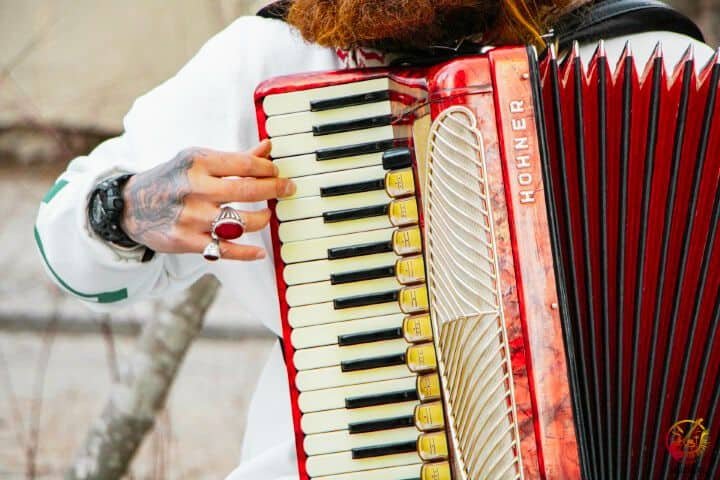
When you first look at accordions, you see the number of bass buttons 48, 72, or 120. More buttons give you more keys to play in, but that’s not the whole story. Real flexibility comes from four key things working together.
First is the note range on the right-hand side, where you play the melody. A full-size accordion gives you more notes to play with, so you don’t have to change the music to fit on a smaller keyboard.
Second is the accordion’s sound options, which you control with switches called registers. These switches change which sets of metal reeds inside the accordion make sound. A good accordion might have a few sets of reeds: a low one, a high one, and one at normal pitch. Mixing these creates different sounds.
For example, a bright, shimmering sound called “musette” is perfect for French music, while a deep, single-reed sound might be better for jazz. More switches mean more sounds to choose from.
Third, and the most important part for flexibility, is the left-hand system. This is where the instrument’s power for playing chords and bass lines comes from. We’ll get into this more, but it’s the biggest clue to understanding what is the most versatile accordion.
Finally, there’s weight and comfort. A huge, heavy accordion might have every feature you can imagine, but if you can’t comfortably hold it for a whole song, it isn’t very useful for you. The most versatile instrument is one you actually enjoy playing.
Piano Keys or Buttons on the Right Hand?
The first thing most people notice about an accordion is the right-hand side. You’ll see either piano style keys or a grid of small, round buttons. This choice affects how you play and what feels easy or hard.
The piano accordion (PA) is common in North America. The keyboard looks and feels just like a piano, so if you’ve ever played piano, it will feel familiar. It’s easy to see the notes and scales. The downside is that the keys are wide. If you need to play two notes that are far apart, you have to really stretch your hand. This can make playing fast or complicated music hard on your hands.

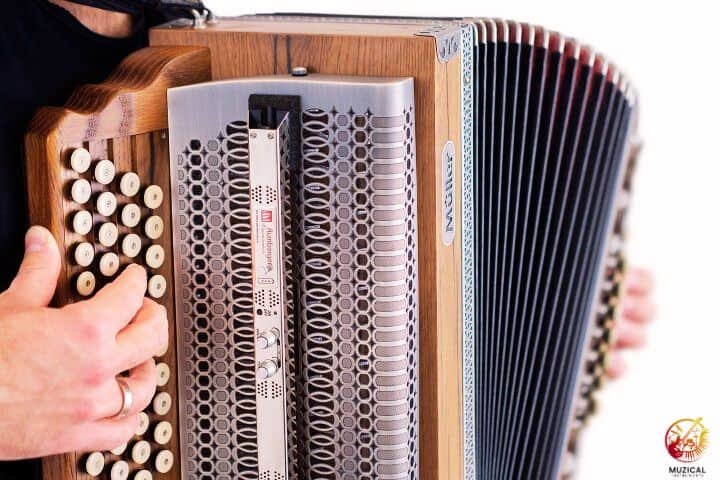
The chromatic button accordion (CBA) might look confusing at first, but its design is very clever. The buttons are packed closely together, so you can play a lot of notes without moving your hand much. Even better, the finger pattern you use to play a scale is the same for every single key. Once you learn how to play a C major scale, you use the exact same finger movements to play a G major scale, just starting on a different button. For many, the right-hand layout is a big part of what is the most versatile accordion, and the efficiency of the CBA is hard to beat for complex music like jazz or classical.
Piano Keys vs. Button Keys
| Feature | Piano Accordion (PA) | Chromatic Button Accordion (CBA) |
|---|---|---|
| Look & Feel | Black and white keys, just like a piano. | A grid of small, round buttons. |
| Good For |
– People who already know piano. – Easy to see the notes. – Great for playing chords and melodies. |
– Playing fast music easily. – Playing in any key with the same finger pattern. – People who want maximum efficiency. |
| Not So Good For |
– Big jumps between notes can be a stretch. – Can be less efficient for very fast music. |
– Looks confusing at first. – Can be harder to find teachers in some places. |
| Best For | Players with a piano background, folk music, and accompanying singers. | Jazz, classical, and other complex styles. Players who want the most powerful system. |
Why the Left Hand is the Real Secret
If the right hand sings the melody, the left hand is the whole backup band. This is where the accordion’s power for harmony and rhythm lives. The left-hand system is really the secret to figuring out what is the most versatile accordion. Most accordions use a system called Stradella Bass, but for total freedom, you need to know about Free Bass.
The Stradella system is brilliant for playing along with music. The buttons are set up as shortcuts. Two rows are for single bass notes, and the other four rows are for ready-made chords: Major, Minor, 7th, and Diminished.
Expert Insight: Think of the Stradella system like this: instead of needing to know that a G chord is made of the notes G, B, and D, you just press the “G Major” button. It makes playing the “oom-pah-pah” of a waltz or the bass-chord rhythm of a polka incredibly easy.
But here’s the catch: you can’t play a melody with those chord buttons. This limits you if you want to play classical music with two separate melodies or a cool walking bass line in a jazz song.
That’s why the Free Bass system was invented. In this system, every single button on the left hand plays just one note, like a piano keyboard. This “frees” your left hand to play anything you want melodies, bass lines, and complex harmonies. It turns the accordion into an instrument that can handle the most difficult classical and jazz music.
Left-Hand Systems Explained
| System | How It Works | Good For | Is It Easy? |
|---|---|---|---|
| Stradella Bass | Buttons play either single bass notes or preset chords. | Playing backup chords for folk, polka, pop, and waltzes. | Fairly easy. It’s designed to be a shortcut. |
| Free Bass | Every button plays a single note, like a piano. | Playing complex melodies and bass lines for classical and jazz. | Much harder. You have to learn a whole new keyboard layout. |
| Converter | A switch lets you change the buttons from Stradella to Free Bass. | Everything! You get the best of both worlds. | The hardest, because you need to learn both systems. |
So, What is the Most Versatile Accordion for a Player?
So we have a problem: Stradella is great for chords, and Free Bass is great for melodies. For years, if you wanted to do both, you needed two different accordions. But then, a clever solution was invented: the converter accordion.
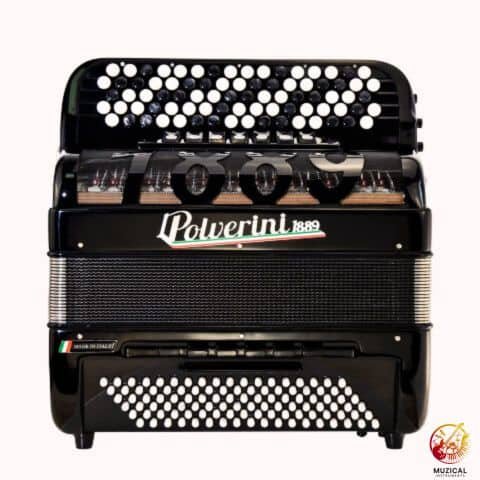
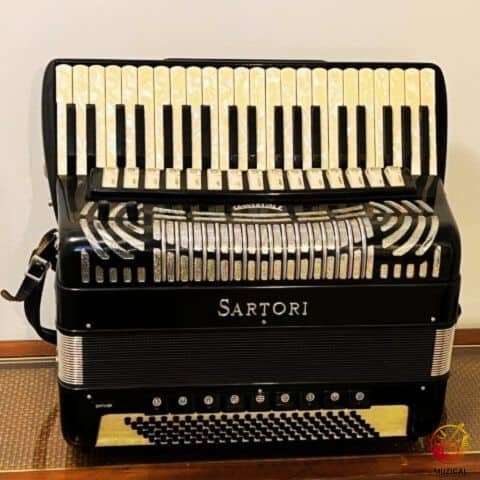
A converter accordion is the answer to what is the most versatile accordion in the acoustic world. It combines both the Stradella and Free Bass systems in one instrument. With a simple flip of a switch, you can change how the left-hand buttons work.
In one mode, they are the easy Stradella chord buttons. Flip the switch, and those same buttons turn into a fully chromatic Free Bass keyboard.
This is the instrument that can truly do it all. You can play traditional folk music with easy “oom pah” chords, then flip the converter switch and play a beautiful piece by Bach. The converter gives you access to all styles of music without compromise. This combination is why many pros believe it’s the answer to the question, what is the most versatile accordion? Of course, this amazing flexibility comes at a cost. These instruments are heavier, more complex, and more expensive. But for the serious player, they are worth it.
What About Digital? Is a Roland the Most Versatile Accordion?
The story of what is the most versatile accordion doesn’t end with acoustic instruments. We now have digital accordions, like the Roland V–Accordion series. These instruments look and feel like a regular accordion, but they use technology to create the sound.
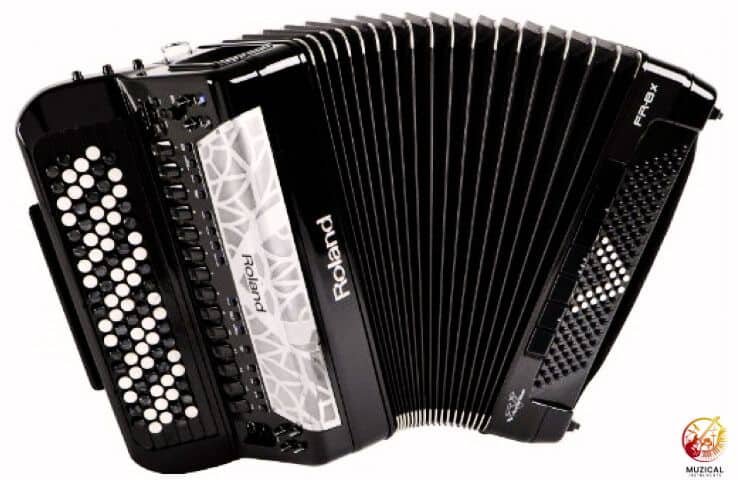
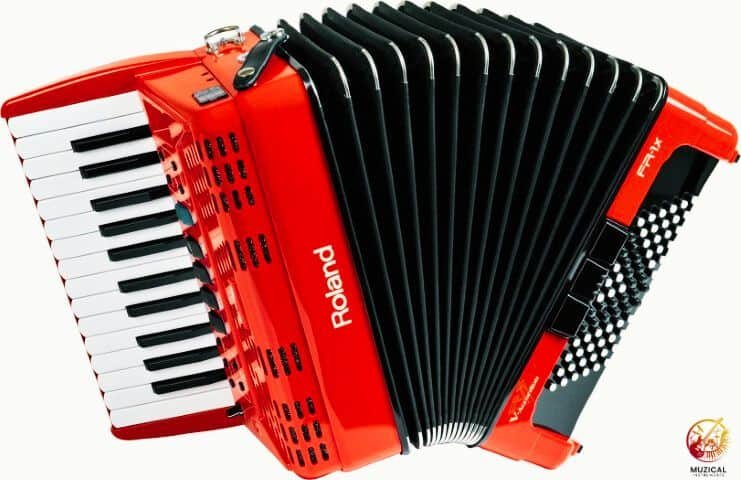
When you just look at the features, a digital accordion is a champion of versatility. You can:
- Choose from dozens of different accordion sounds, from a classic Italian sound to a French musette.
- Play hundreds of other instrument sounds, like organs, strings, and horns.
- Switch the left hand from Stradella to Free Bass with the press of a button.
- Even change the right-hand layout from piano to button style in the settings!
- Practice quietly with headphones, so you don’t disturb anyone.
From a tech standpoint, it’s hard to argue that this isn’t the answer to ‘what is the most versatile accordion?’ It is a powerhouse for a musician who plays in a band or records music.
But there’s another side to it. Many players love the feeling of the real, wooden accordion vibrating against their chest as the metal reeds make sound. It’s an organic feeling that digital models, as good as they are, don’t perfectly copy.
The choice often comes down to what you care about more: the pure, authentic feel of an acoustic instrument or the endless possibilities of technology.
Final Thoughts: Finding Your Perfect Match
So after all this, what is the most versatile accordion? The truth is, there are two main answers, and the right one depends on you.
If you love the traditional sound and feel of an accordion, the acoustic converter accordion is your winner. Its ability to switch between chord playing and melody playing in the left hand makes it the king of flexibility for acoustic instruments.
If you love technology and want a massive library of sounds, the digital accordion is the undisputed champion. It offers more options for sounds and styles than any other type of accordion.
Your personal answer to what is the most versatile accordion depends on what you value most. Before you choose, think about the music you love and the music you dream of playing. The search for what is the most versatile accordion is really a search for the right tool for your music.
The best instrument is the one that closes the gap between the music in your head and the sounds you share with the world.
FAQ: What Is the Most Versatile Accordion?
1. What’s the difference between a piano accordion and a button accordion?
The main difference is the keyboard on the right-hand side where you play the melody. A piano accordion has black and white keys just like a piano, which is easy to understand if you have any keyboard experience. A chromatic button accordion has a grid of round buttons. While it might look confusing, the buttons are closer together and the fingering pattern for scales is the same in every key, which many players find more efficient for playing fast or complex music.
2. What is a free bass accordion used for?
A standard accordion has preset chord buttons on the left side for easy accompaniment (like playing “oom-pah-pah”). A free bass accordion is different. Every button on the left side plays a single note, just like a piano keyboard. This “frees” your left hand to play its own melodies, complex bass lines, and harmonies. It’s the system you need for playing advanced classical music or intricate jazz solos.
3. Should I get a 72 bass or a 120 bass accordion?
The number of bass buttons determines how many musical keys you can easily play in. A 120 bass accordion gives you all the bass notes and chords you need to play in any of the 12 musical keys, making it the most musically versatile in terms of key signatures. However, it’s also bigger and heavier. A 72 bass accordion is lighter and more compact but still offers enough keys to play the vast majority of folk and popular music. For many players, a 72 bass is the perfect balance of versatility and portability.
4. Are digital accordions good for beginners?
They can be fantastic for beginners! The biggest advantage is the headphone jack, which allows you to practice silently anytime without disturbing family or neighbors. They never need tuning and often include different types of accordion layouts in one instrument, so you can experiment. The main trade-off is that they don’t have the same organic feel and vibration as a traditional acoustic accordion.
5. What is a converter accordion again?
A converter accordion is the most versatile type of acoustic accordion. It’s like having two left-hand systems in one instrument. A switch allows you to change the function of the buttons. In one mode, they play the standard preset chords (Stradella system). Flip the switch, and they change to a free bass system where every button plays a single note. This means you can play simple folk music and complex classical pieces on the same instrument.
6. What is the most versatile accordion for playing jazz or classical music?
For these styles, you need an accordion that allows for complex playing with both hands. This means an accordion with a free bass system is essential for your left hand. Therefore, a converter accordion is the ideal choice because it gives you that required free bass system while still having the standard chord system for other genres. For the right hand, many advanced players prefer a chromatic button accordion (CBA) because its layout makes it easier to play fast and technical passages.
